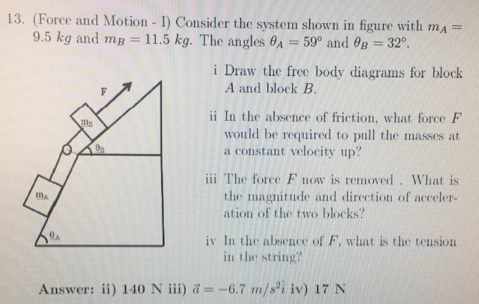(Force and Motion - I) Consider the system shown in figure with mA = 9.5 kg and mB = 11.5 kg. The angles θA = 59∘ and θB = 32∘. i Draw the free body diagrams for block A and block B. ii In the absence of friction, what force F would be required to pull the masses at a constant velocity up? iii The force F now is removed. What is the magnitude and direction of acceleration of the two blocks? iv In the absence of F, what is the tension in the string? Answer: ii) 140 N iii) a→ = −6.7 m/s2 i^ iv) 17 N
